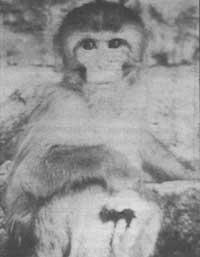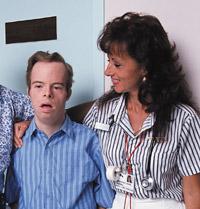Investigate the skull and learn about Down syndrome
2000/05/01 Elhuyar Zientzia Iturria: Elhuyar aldizkaria
People with Down syndrome, instead of having two copies of chromosome 21, have three copies. Genetic failure occurs in the early stages of embryonic development, leading to the birth of children at higher risk for cognitive problems and heart or immune failure. Children also have faces with special and common characteristics. And one of these characteristics can be one of the ways to understand the initial development of the disease.
The researcher at Johns Hopkins University in Baltimore, Rogers Reeves, has studied in mice the development of Down syndrome, which is the development of the embryonic skull of mice. Reeves has used the laser microscope to capture three-dimensional images of mouse skull development, comparing them to the skull of common mice. For mice with Down syndrome (as in humans), the cranial bones are longer to the left and right and shorter ahead.
All these investigations, both in the mouse and in humans, have been done to ensure that the disease develops in a similar way, but the decisive step is the following; according to Reeves, studying the development of the skull of mice at the beginning of the belly would allow to relate the activity of the tripled gene with the development of the disease.

Gai honi buruzko eduki gehiago
Elhuyarrek garatutako teknologia





